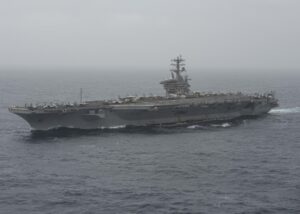
The Navy is considering whether to extend the service lives of the oldest Nimitz-class aircraft carriers, a service official said Thursday. “We’ve got 40 more years of Nimitz [class] life but Nimitz herself is coming up to potentially an end of life cycle at the end of this [Future Years Defense Program]. But she has capability beyond that point. So we’re looking at where that capability sits, from a timeframe perspective,” Program Executive officer for Aircraft Carrier Rear Adm. James…

 By
By 











